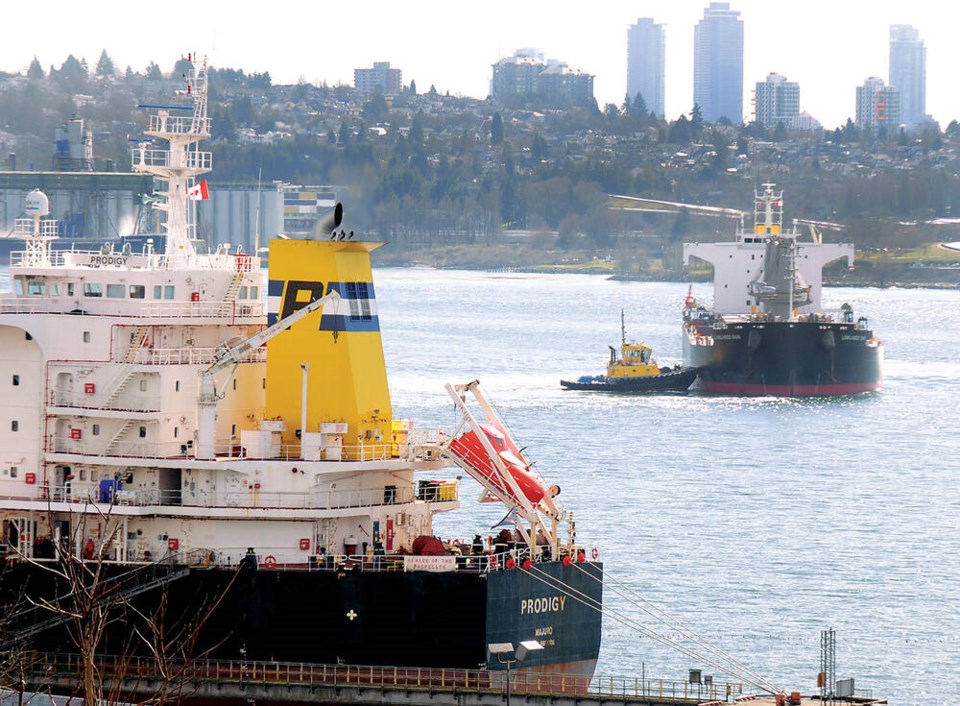Large increases in exports – particularly of grain and coal from North Shore port terminals – helped push the Port of Vancouver to a record volume of trade last year.
The port moved 150.4 million metric tonnes of cargo in 2023, the Vancouver Fraser Port Authority stated Friday.
Trade from North Shore port terminals made up almost a third of that, said Peter Xotta, president and CEO of the Vancouver Fraser Port Authority.
Total cargo volumes processed through North Shore terminals were up three per cent last year, from 42.9 million metric tonnes to 44 million tonnes, Xotta said.
The volume going through the North Shore is probably bigger than the total volume going through Canada’s next biggest port, Xotta added.
Grain exports were the driving force in those statistics.
Grain exports were up more than 50 per cent last year, with nine bulk grain terminals exporting 14.7 million metric tonnes of wheat to 38 different countries. North Shore terminals likely made up about half of those export figures, said Xotta. “Richardson, G3 and Cargill are very prominent players in the agricultural space,” he said.
“Agriculture has been kind of on a tear, I would say, in Canada for the last couple of years,” said Xotta. “And that’s reflected in our numbers.”
The numbers reflect a sharp increase following a drought on the prairies two growing seasons ago, combined with the war in Ukraine that has limited worldwide access to that country’s grain.
Coal and sulphur exports were also up last year – including the metallurgical coal shipped through Neptune Terminals and the sulphur shipped through Vancouver Wharves. Exports of metallurgical coal were up six per cent last year. Most of the coal is shipped to markets in Asia, including Japan, Korea and China, according to the port. Exports of sulphur – used in both fertilizer and industrial processes – were up 11 per cent.
Demand for potash – a component of fertilizer shipped through Neptune Terminals – was down 11 per cent last year, in part due to a port strike in July, said Xotta. Neptune is one of three port terminals that handle potash.
Breakbullk products – consisting primarily of forest products shipped through terminals like Lynnterm on the North Shore – were down last year. That tends to reflect overall economic trends, particularly in the housing and construction industries, said Xotta. When those sectors slow – as they have with higher interest rates – “forest products have suffered.” Overall exports of breakbulk products were down 27 per cent last year.
And if you’ve noticed an increased number of freighter in the harbour recently, you’re not imagining things. Several weeks ago, cold winter weather on the Prairies meant train lengths had to be shortened, meaning grain traffic into the port slowed down, while vessels continued to arrive on schedule.
That is now moderating, said Xotta.



